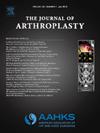关节置换术中的相对价值单位:过去、现在和未来。
IF 3.4
2区 医学
Q1 ORTHOPEDICS
引用次数: 0
摘要
相对价值单位(RVUs)最初是由1989年的《综合预算调节法案》引入的,目的是根据医疗服务所需的努力、技能和资源来规范医生的报酬。这种方法取代了“通常、习惯和合理”的标准,减少了供应商之间支付的可变性。rvu由医生工作、执业费用和医疗事故费用组成。在关节置换术中,经通货膨胀调整后的全髋关节和膝关节置换术报销下降主要是由于缺乏通货膨胀调整,而不是由于rvu值或医疗保险转换因子的名义下降。虽然以价值为基础的护理模式,如关节置换综合护理计划和基于绩效的激励支付系统,旨在将基于rfu的支付与质量和成本指标联系起来,但薪酬仍主要与按服务收费的模式联系在一起。主要的挑战包括翻修关节置换术的补偿不足和RVU管理的行政负担。尽管有其局限性,RVU系统提高了医生报销的透明度,尽管需要改进以更好地将财政激励与骨科基于价值的护理原则结合起来。本文章由计算机程序翻译,如有差异,请以英文原文为准。
Relative-Value Units in Arthroplasty: Past, Present, and Future
Relative value units (RVUs) were first introduced by the Omnibus Budget Reconciliation Act of 1989 to standardize physician compensation based on the effort, skill, and resources required for medical services. This methodology replaced the “usual, customary, and reasonable” standard, which reduced variability in payments across providers. RVUs are comprised of physician work, practice expenses, and malpractice costs. In arthroplasty, declining inflation-adjusted reimbursements for total hip and knee replacements are primarily due to a lack of inflation adjustments, rather than nominal decreases values of RVUs values or the Medicare Conversion Factor. While value-based care models like the Comprehensive Care for Joint Replacement initiative and the Merit-Based Incentive Payment System aim to link RVU-based payments with quality and cost metrics, compensation remains largely tied to fee-for-service models. Major challenges include inadequate compensation for revision arthroplasty and the administrative burden of RVU management. Despite its limitations, the RVU system has enhanced transparency in physician reimbursement, though improvements are needed to better align financial incentives with value-based care principles in orthopaedics.
求助全文
通过发布文献求助,成功后即可免费获取论文全文。
去求助
来源期刊

Journal of Arthroplasty
医学-整形外科
CiteScore
7.00
自引率
20.00%
发文量
734
审稿时长
48 days
期刊介绍:
The Journal of Arthroplasty brings together the clinical and scientific foundations for joint replacement. This peer-reviewed journal publishes original research and manuscripts of the highest quality from all areas relating to joint replacement or the treatment of its complications, including those dealing with clinical series and experience, prosthetic design, biomechanics, biomaterials, metallurgy, biologic response to arthroplasty materials in vivo and in vitro.
 求助内容:
求助内容: 应助结果提醒方式:
应助结果提醒方式:


